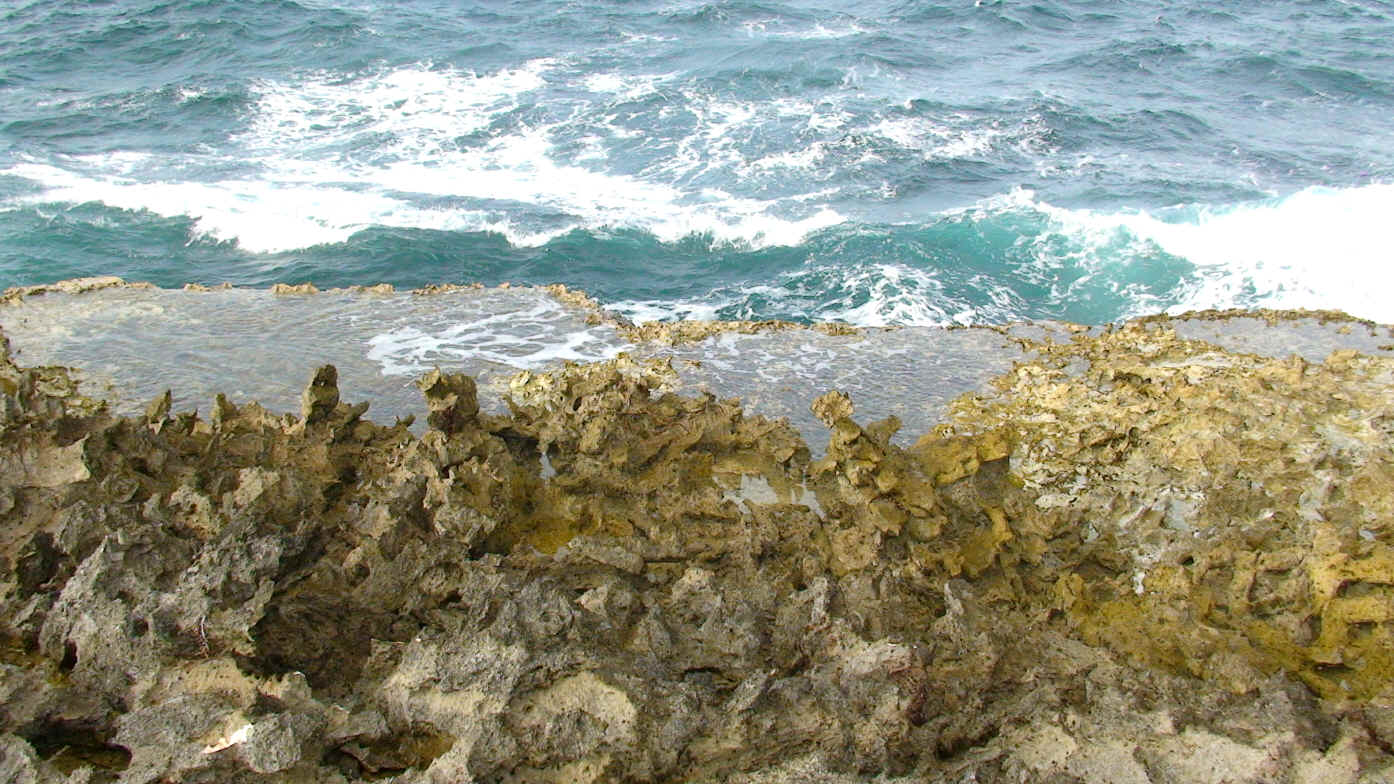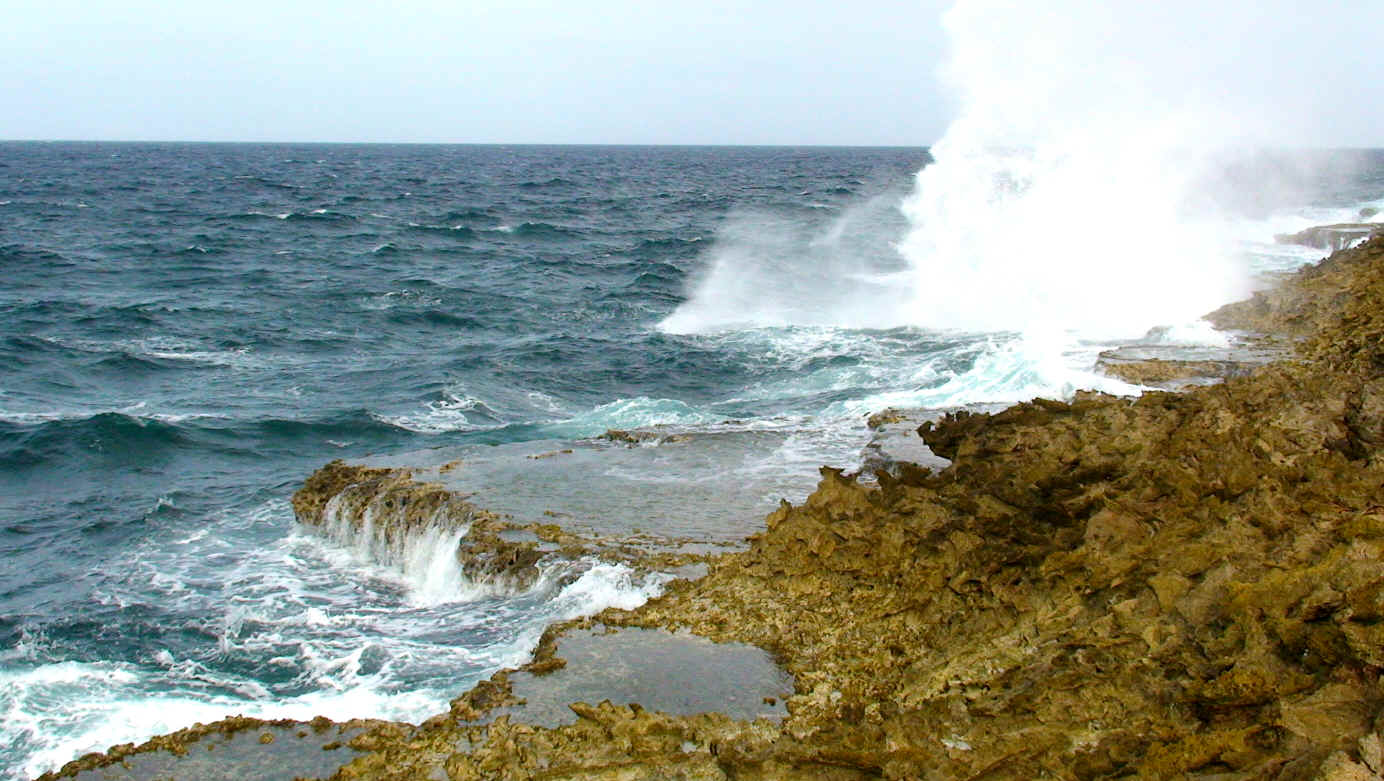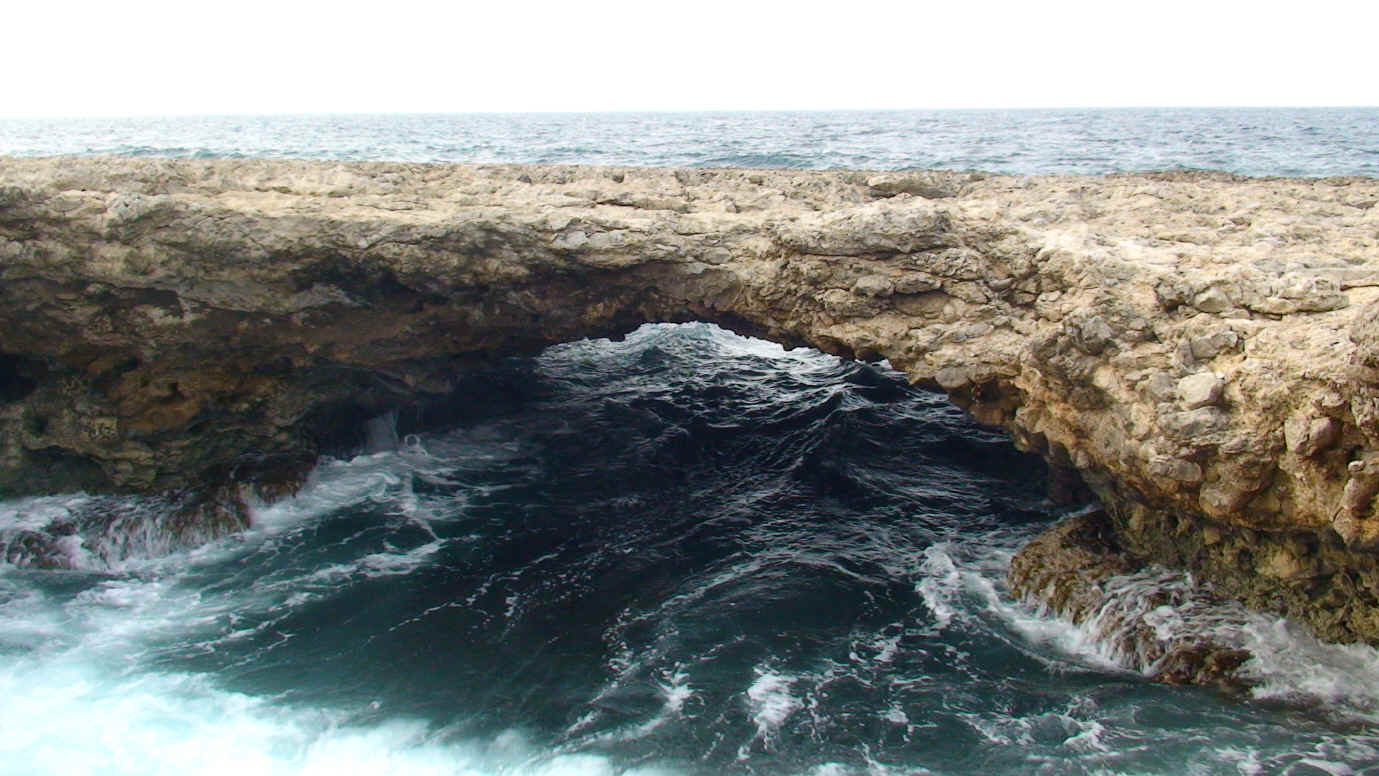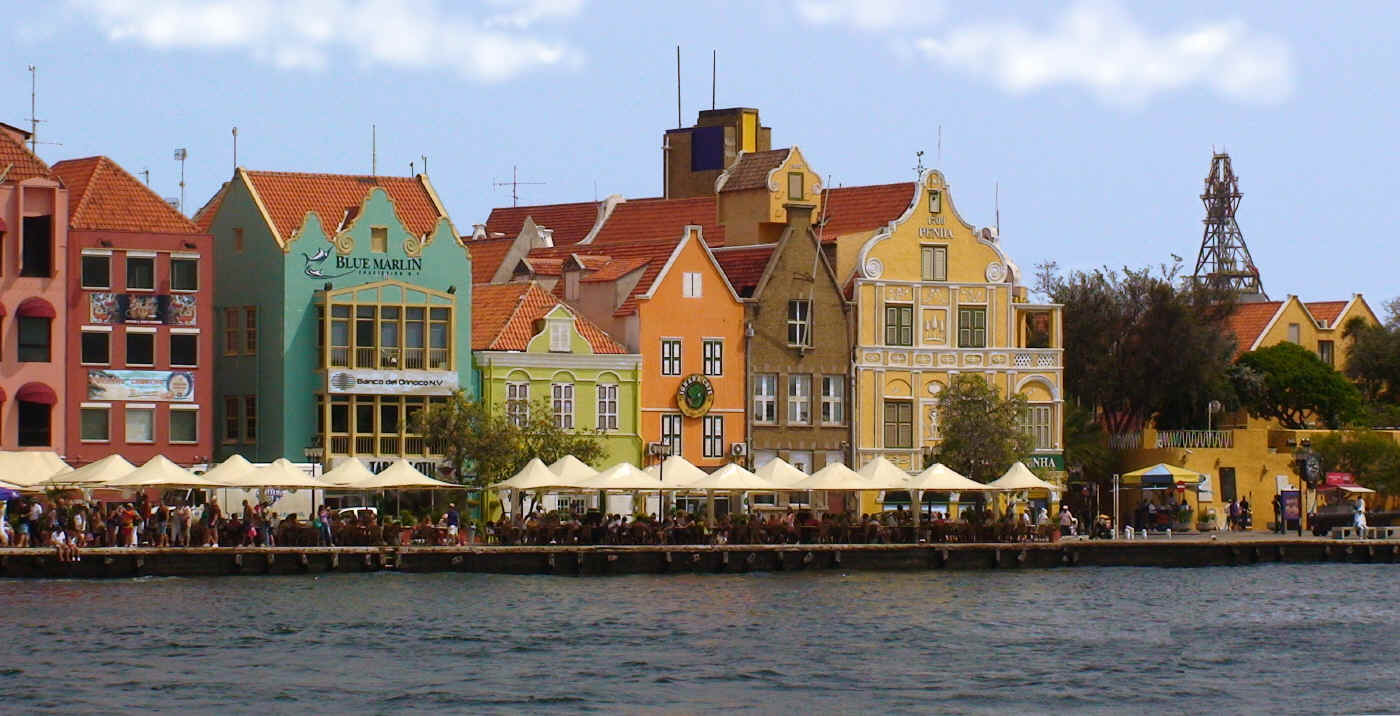
A Trip to Curašao!
Un Biaha na K˛rsou!

No
matter how well you plan your trip (and I had planned it for months, carrying
two travel books plus 20 more pages of notes, maps, and information with me), you're
still going to have a series of mishaps, accidents, and even disasters.
It's all a part of travelling. But
the dumb part is, they're usually your own fault.
Like me losing my passport within minutes of arriving in Curašao.
I
had been wanting to go to this tiny speck in the southern Caribbean for a dozen
years -- not because it's scenic or exotic or tropical, but because I had been
studying their language all that time, for no good reason at all.
Papiamentu is only spoken on 3 little islands in the whole world, the
"ABC Islands" -- Aruba, Bonaire, and Curašao.
But I had found it to be a fascinating creole language, and had gotten to
where I could read about anything written, but had never had even the slightest
chance to speak it to live human beings here in the middle of Oklahoma.
So, I had to make a trip. Curašao
is the largest of the three, with the highest standard of living and best
colonial architecture; Aruba is famous for huge high-rise beach hotels all
clumped on one edge of the island, though the rest is nothing special; and
Bonaire, though larger than Aruba, is not very populated, but is the best for
snorkeling and scuba diving, which I don't do.
So my main focus was on Curašao.
The name comes from the Portuguese word for "heart", and is pronounced Cure-a-sow, as if you're dealing with a sick pig. It has nothing to do with currasows, the primitive flightless bird from the Amazon, because they don't exist on the islands. It was settled by the Spanish and Portuguese in the 1500's, and then taken over by the Dutch in the 1700's. The three islands are still owned by the Kingdom of the Netherlands, with Queen Beatrix on their money, though no doubt they'll soon be changing all that to the new King Willem. Dutch is the official language of government, and quite a few Europeans live there, but 90% of the people prefer to speak their native Papiamentu.
So
I got off the plane, an average sized American Airlines jet, and headed for the
passport control area, only to find that a 747 from Amsterdam had arrived at the
same time as ours. Therefore, passport control
took an hour. With only like 5
planes a day arriving, couldn't they space them out better than that?
Then, annoyingly, everybody had to go through baggage inspection putting
everything on the belt to get x-rayed; this is after arriving in the
country -- you don't have to do that on arrival in Europe
or North America, why on that tiny island? It
was there that I dropped my passport somewhere, being a bit grumpy at that point
and wanting nothing more than to get my rentacar and take off on my grand
adventure. But no, the rentacar
counter wanted to see my passport. Oh
no. I checked every pocket a dozen
times, and dumped out the suitcase. I
went back to the bathroom I had visited, even inspecting the garbage cans.
I figured by then it must have happened at the x-ray area, but getting
back in there from the outside the terminal was a great problem, but I finally convinced a
guard (in Papiamentu, which helped, he'd never heard an Okie tourist attempting
that before) to let me in; and soon another guard found it on a counter where it
had been turned in.
So
now I was quite hot and rattled, but I got the car, a beat-up Hyundai, and took off on
the 15-mile trip to the place I was staying.
An hour and a half later I got there.
There is only one bridge over the bay in town, and it had a traffic jam.
So I went clear around the bay, then had to untangle a mass of one-way
streets. The streets have no logic
to them, they must have originally been donkey paths or something.
The
place I was to stay at was my first trial of the AirBnB website, which is where people all over
the world advertise rooms or apartments for rent, and they are much cheaper than
hotels. My place was a rooftop
apartment of a Dutch lady's house, complete with balcony, hammock, a tiny
swimming pool, and three friendly dogs. I
loved it, though it took me four days before I could drive straight to it
without getting tangled up in the crazy streets.
All
the cars on the islands inexplicably run on premium gasoline, even the dinkiest
foreign jobs (well, all cars down there are foreign to them).
And that's the only kind of gas you can get at gas stations, too.
Makes no sense, since there is nothing resembling a freeway, and hardly a
single hill to climb unless you're going on the dirt roads in the boondocks.
The electricity on the islands is weird. Instead of 110 volts at 60 cycles like North America, or 220 like Europe, they have an inexplicable 127 volts at 50 cycles; which means the appliances you bring from home will work nicely for a while. Then they burn up. And electric clocks will race along and be hours ahead before they too get fried. But at least the plugs are conveniently just like ours, so everybody will make the mistake of using them. Many places, like mine, only have airconditioning in the bedroom. Since the weather is in the 80's practically every day of the year, heating is unheard of, and many houses are very open-air. Mine had a large gap between the top of all the walls and the roof, except in the bedroom, and many don't have glass on the windows, just bars. The temperature has never gone below 68░ in history, and never over 100░ either. They don't bother with hot water heaters, either! But showers, even in the morning, were always quite tolerable. The climate of the ABC Islands is very dry, practically desert-like, with thorny plant and cactuses everywhere -- they are not at all what we would think of as a tropical paradise, such as other Caribbean islands like Dominica and St. Lucia. All the water on the islands is desalinated ocean water -- the Aqualectra plant is highly visible from all over Willemstad, and had its beginnings clear back in 1929. One reason the islands are popular with tourists is because they, especially Aruba, get more days of sunshine than any other place in the whole Caribbean. (It was cloudy every day I was there.)
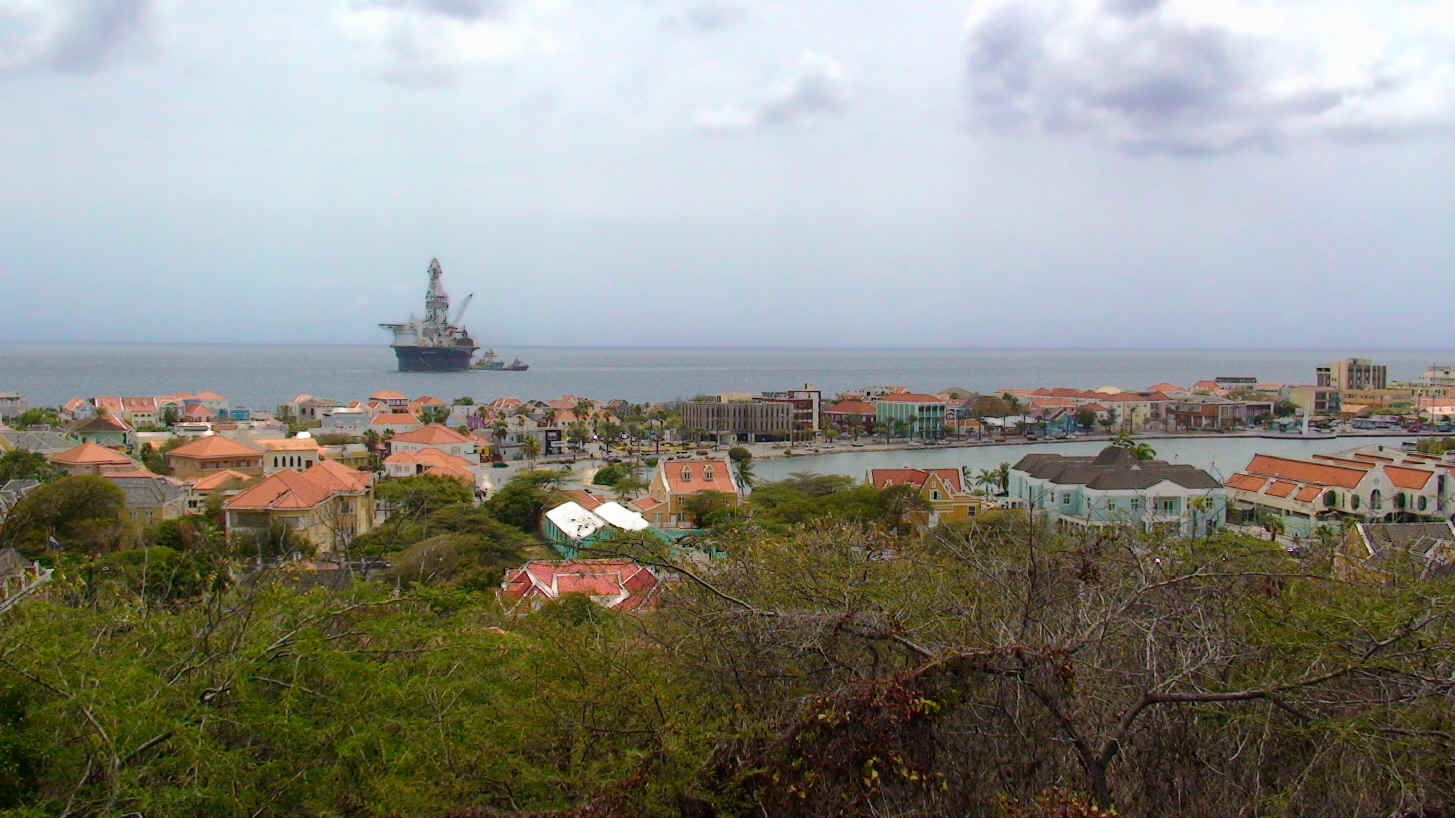
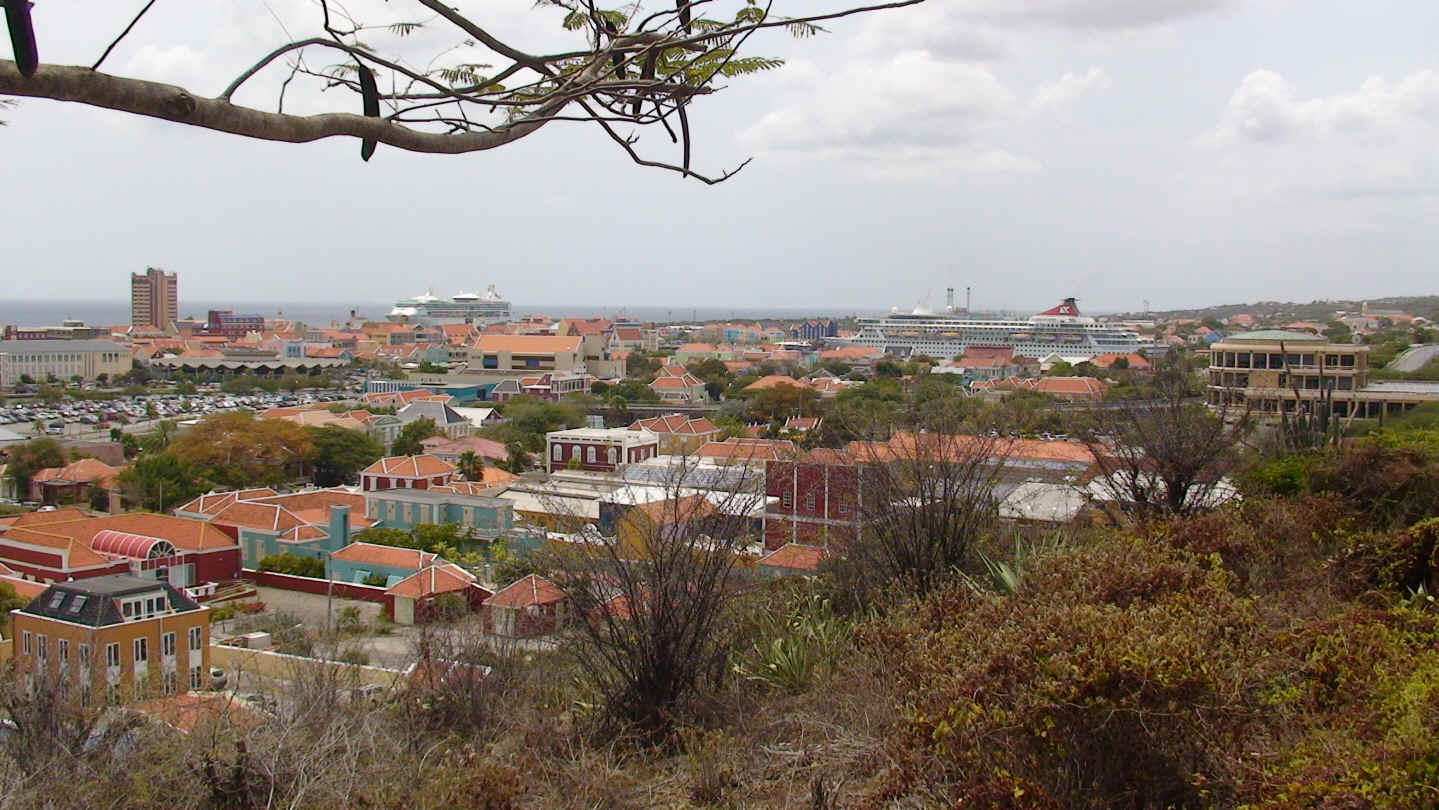
After getting settled, I took off again to explore. I soon found the rich part of town, and was highly impressed with the beautiful houses on cliffs overlooking the bay. There are no lawns, ever; but every house has a large stone or brick fence in front. They are mainly for decoration, since it would be easy to crawl over most of them. The people obviously spend a lot of time and thought on their fences, though not necessarily good taste. Then I drove mile after mile through the more ordinary parts of town, just to see how the people live. The whole island was impressively nicer than I expected, though still not up to American or European standards; but not bad by any means, and I have seen plenty of places here in the US that are worse off than most of Curašao. I spent the whole afternoon exploring the east end of the island. By sunset time, after seeing things and places most tourists would never find, like the little road to nowhere where the locals go to race their motorcycles, or the hill near the airport where the kids gather under a divi-divi tree to see the planes coming and going (big excitement for this little island) -- I found myself saying, quite out loud, "You know, I kinda like this place!"
The fences of
Curašao:
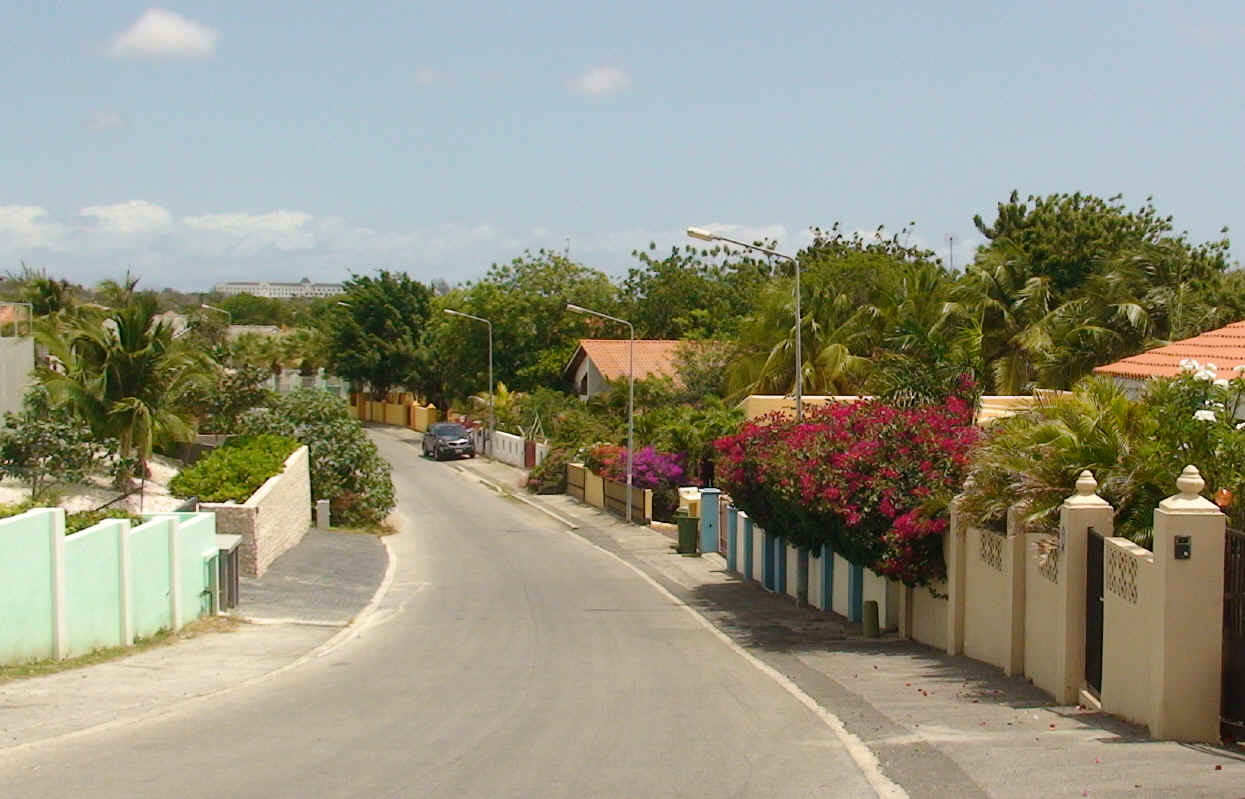
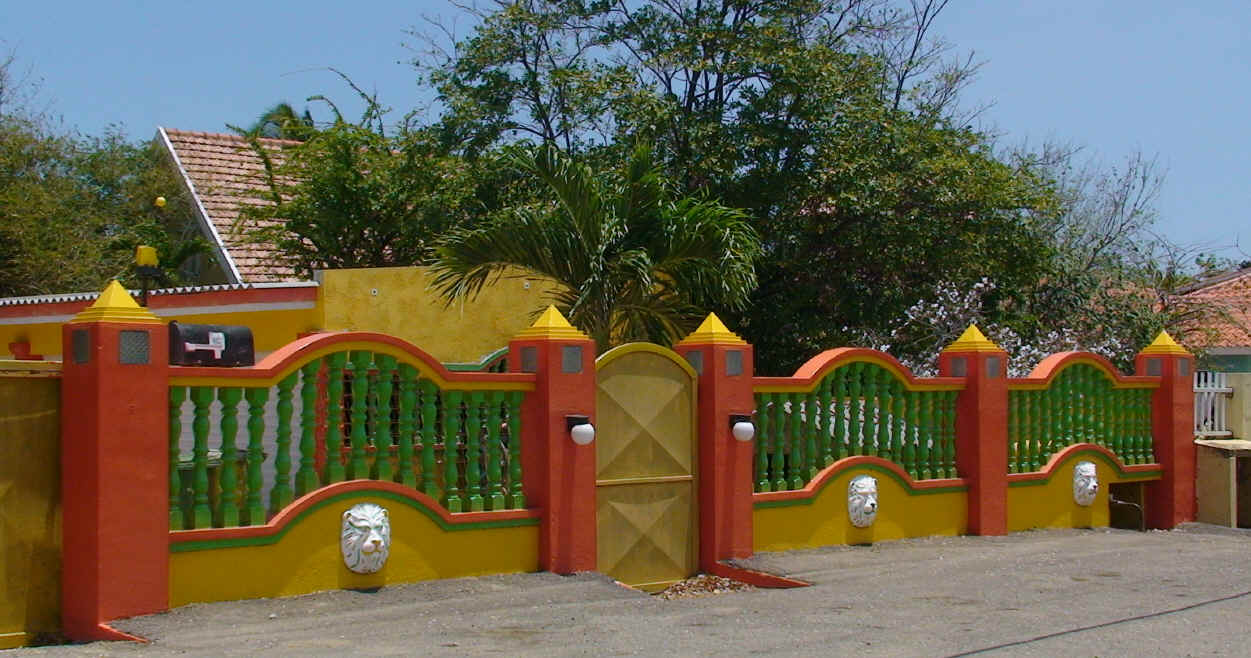
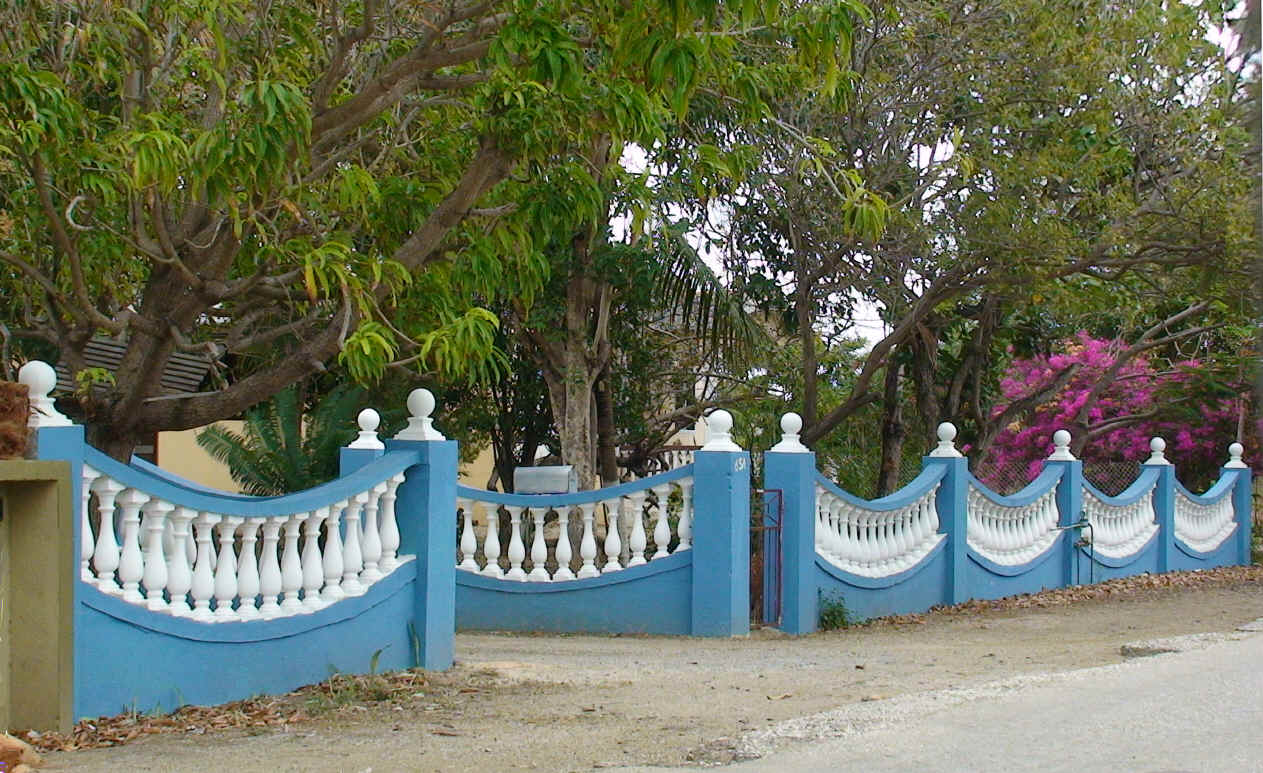
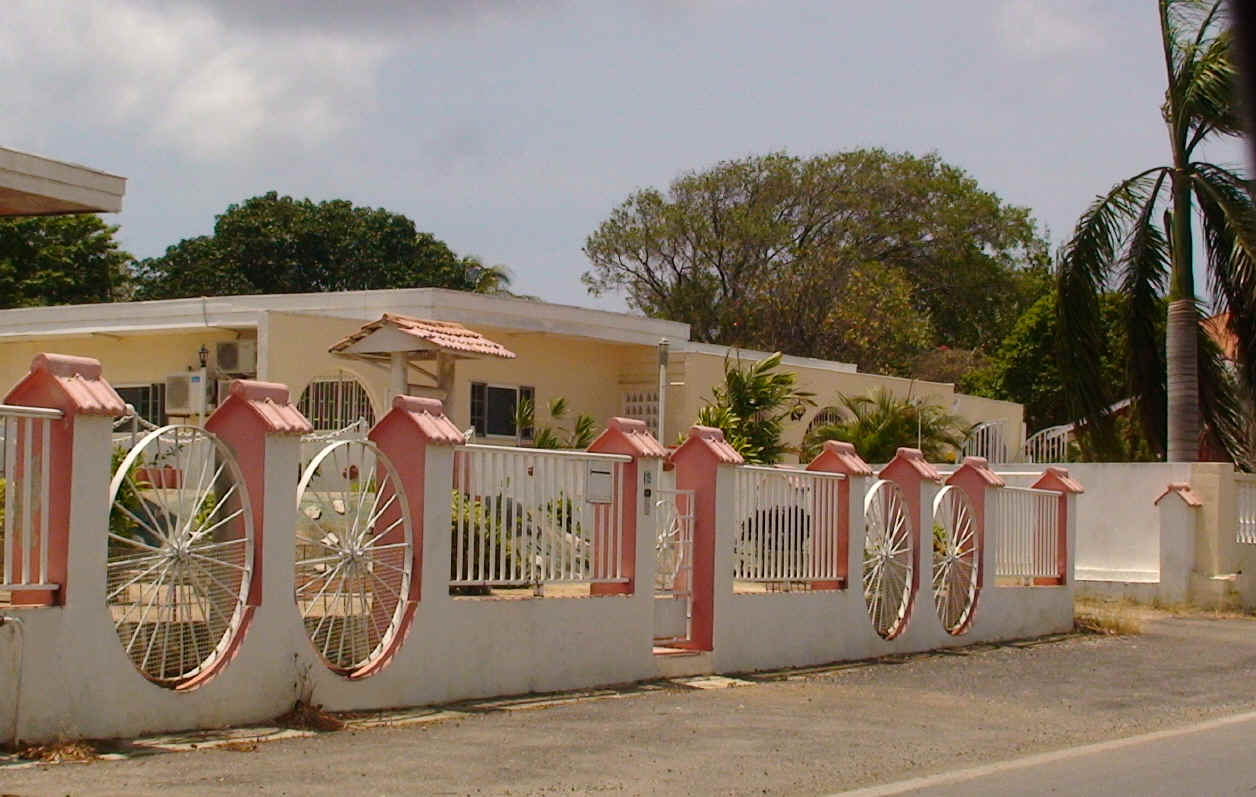
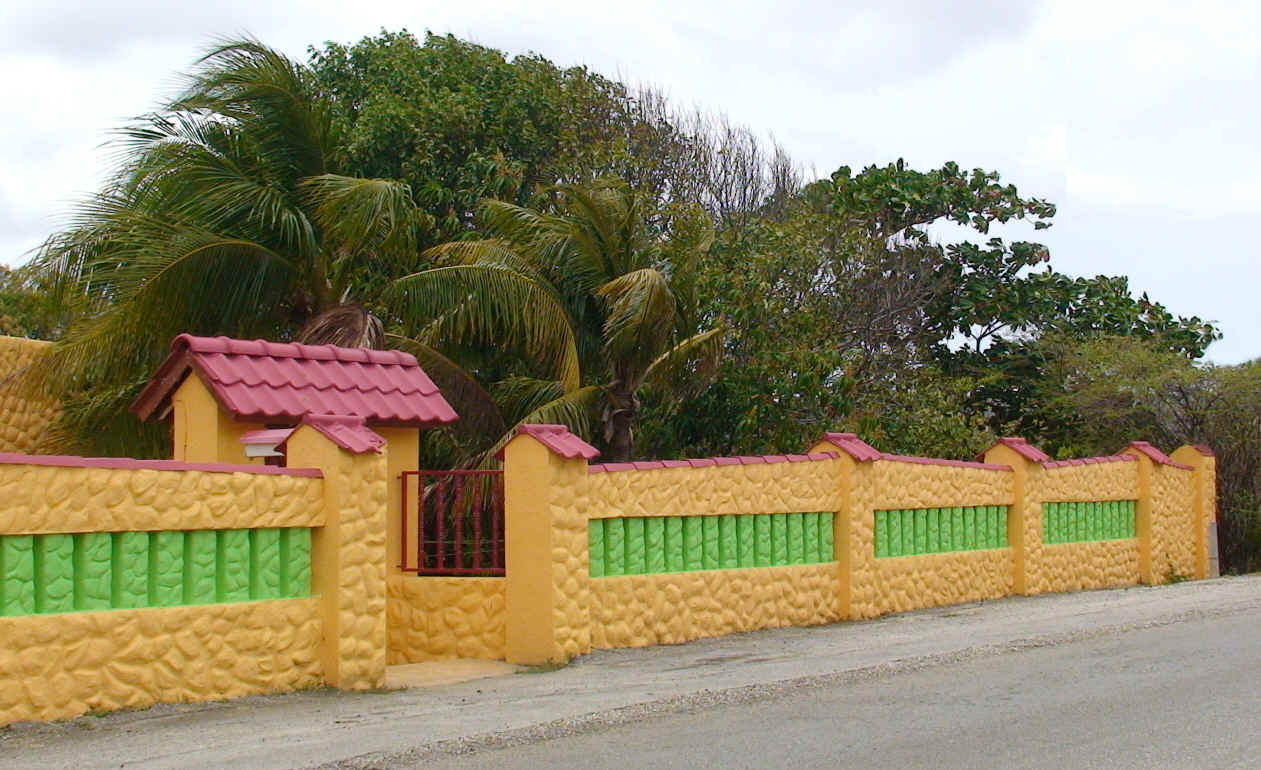
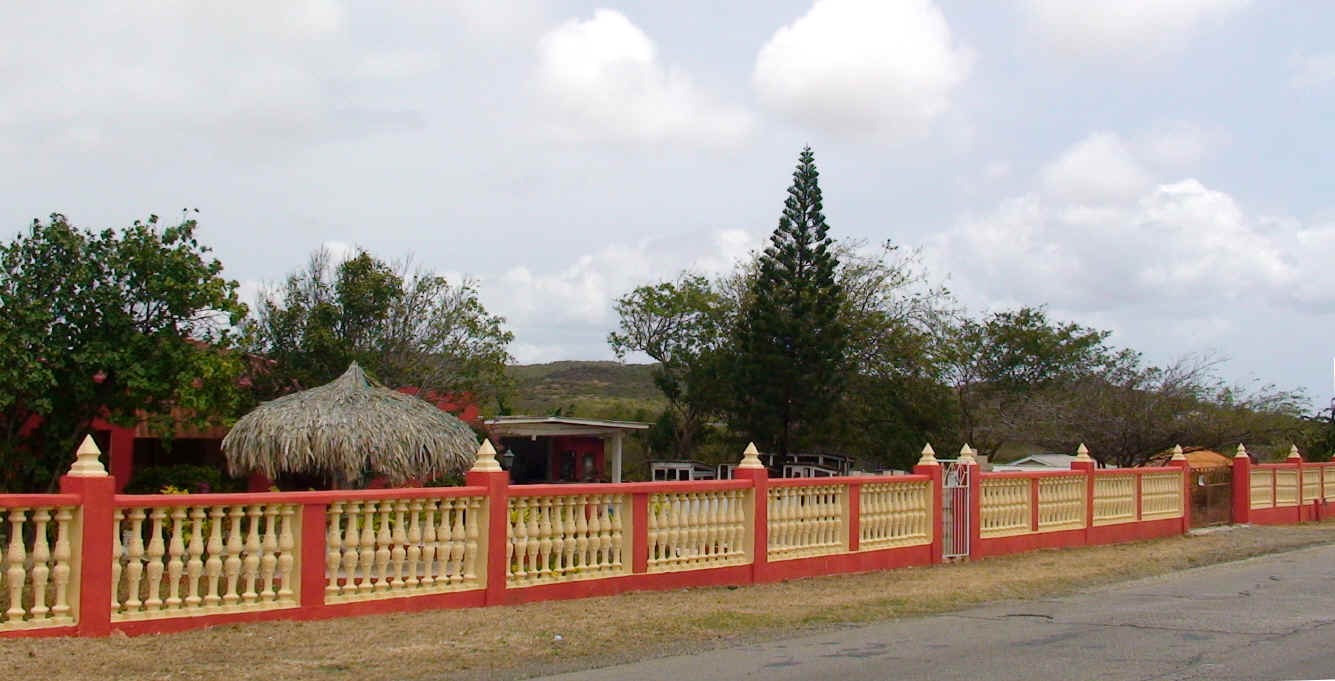
Beautiful
white palm trees!
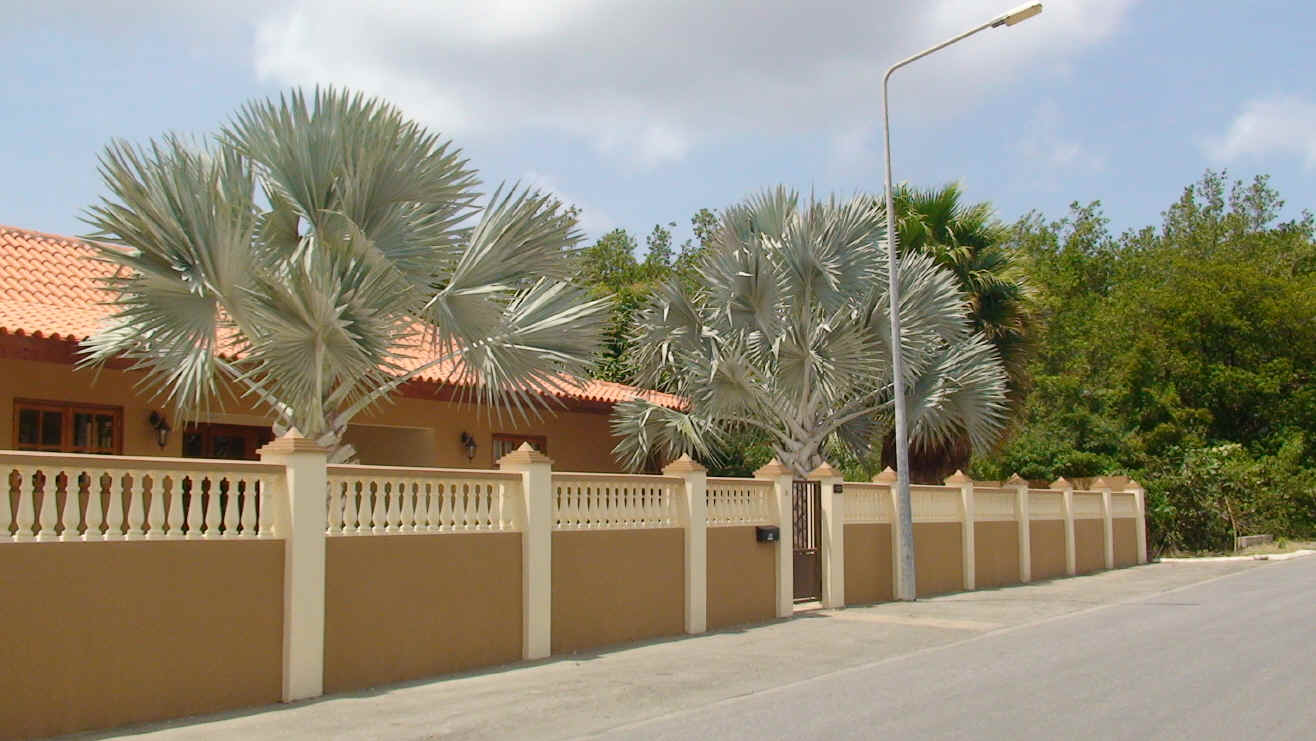
Nobody
climbs this fence:
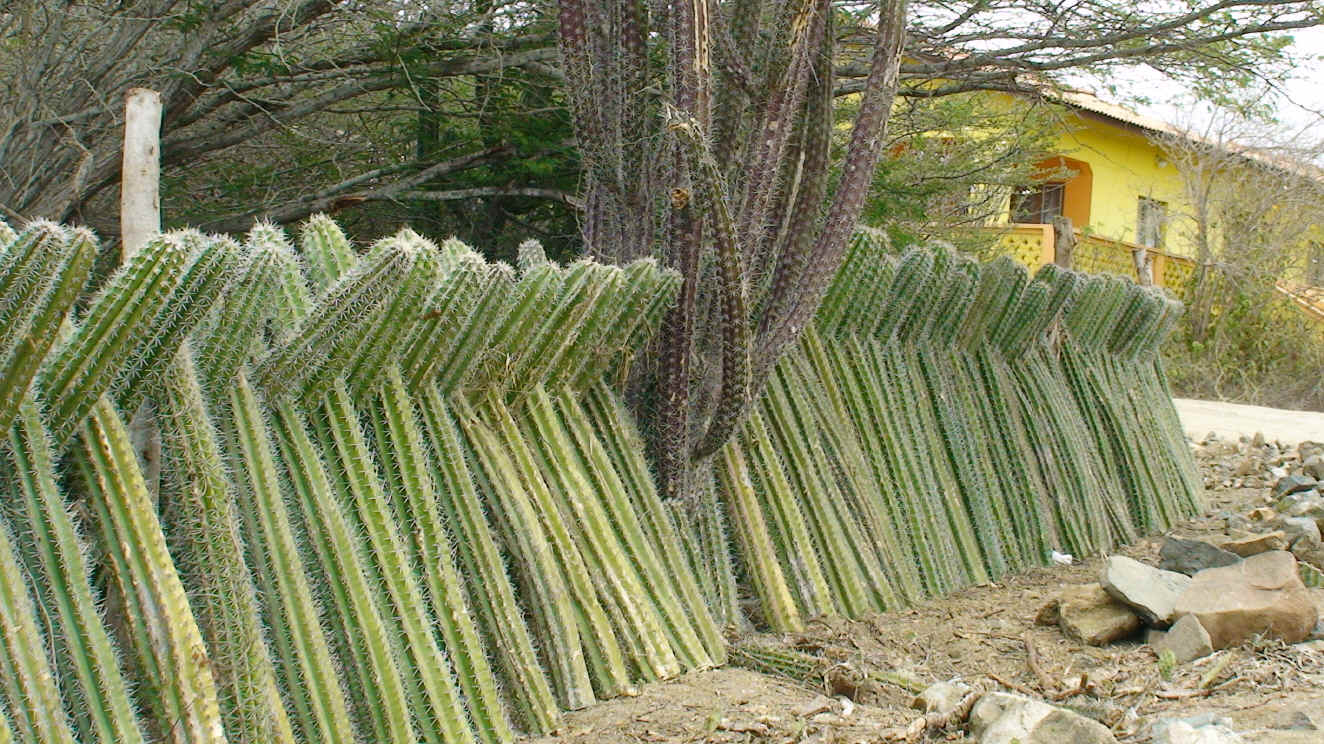
Notice
the tail!
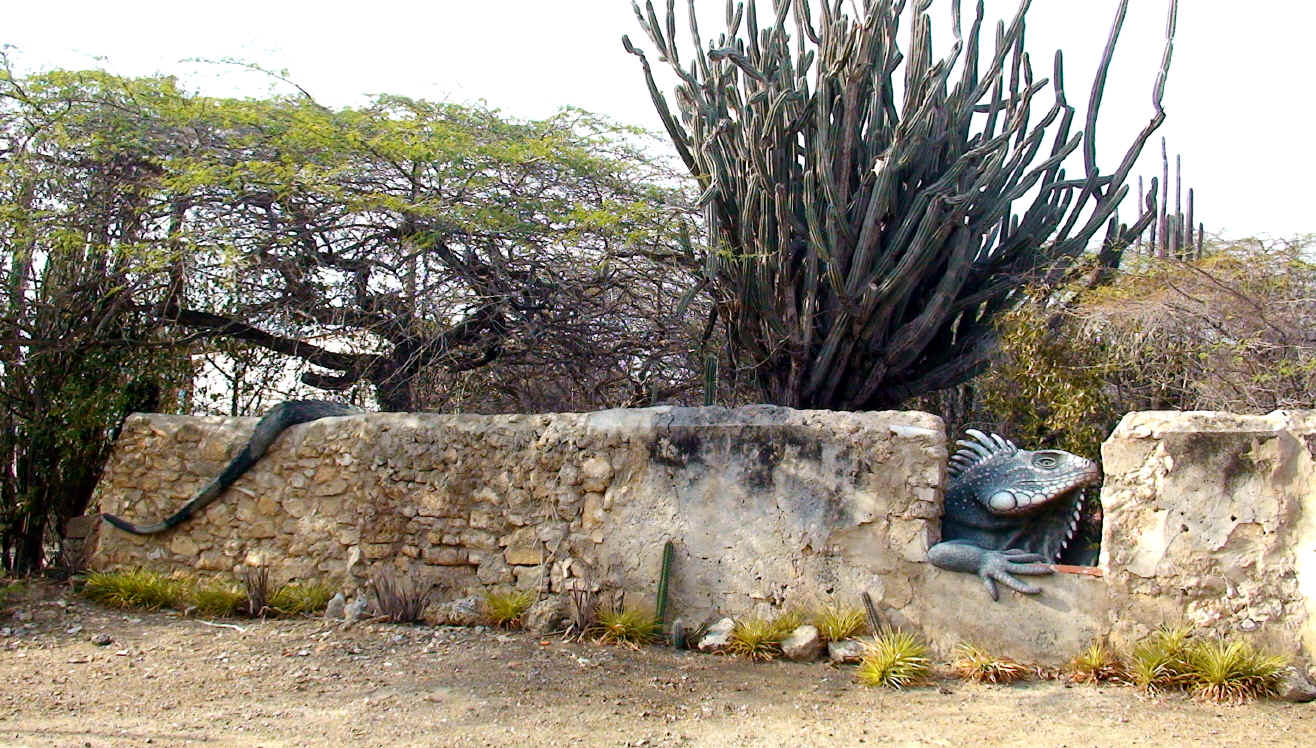
Eventually I wound up right downtown, with its very famous rows of Dutch Colonial architecture. Much of downtown Willemstad is a designated World Heritage Site, and many buildings are from clear back in the 1700's, painted in beautiful Easter-egg pastels, with every color carefully chosen to be different from all the nearby buildings.
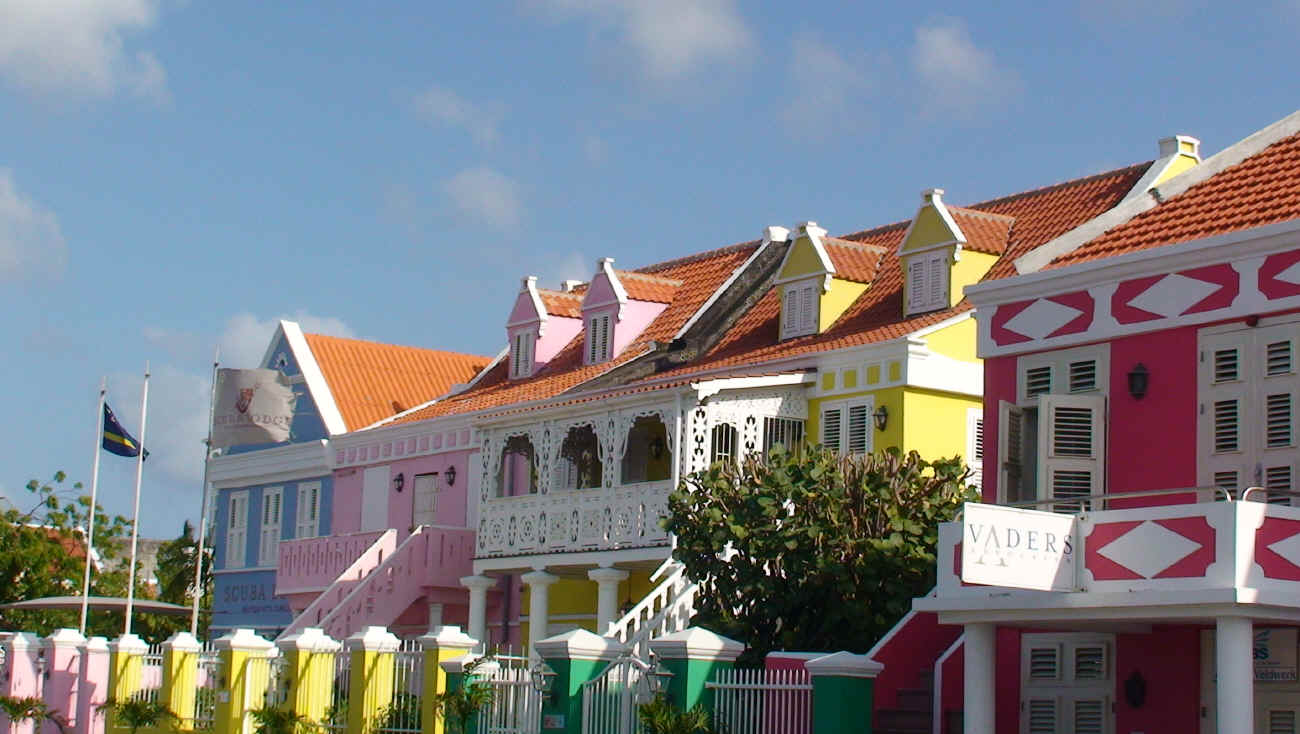
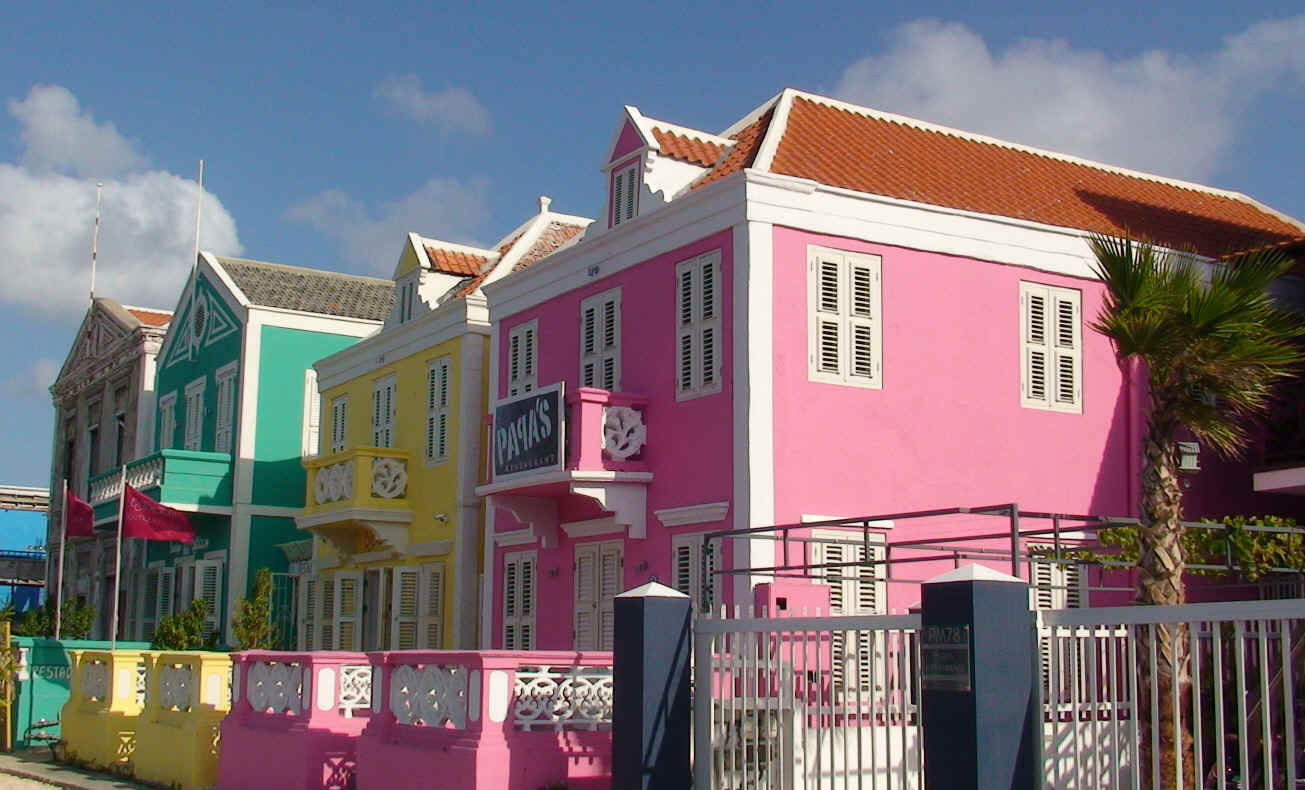
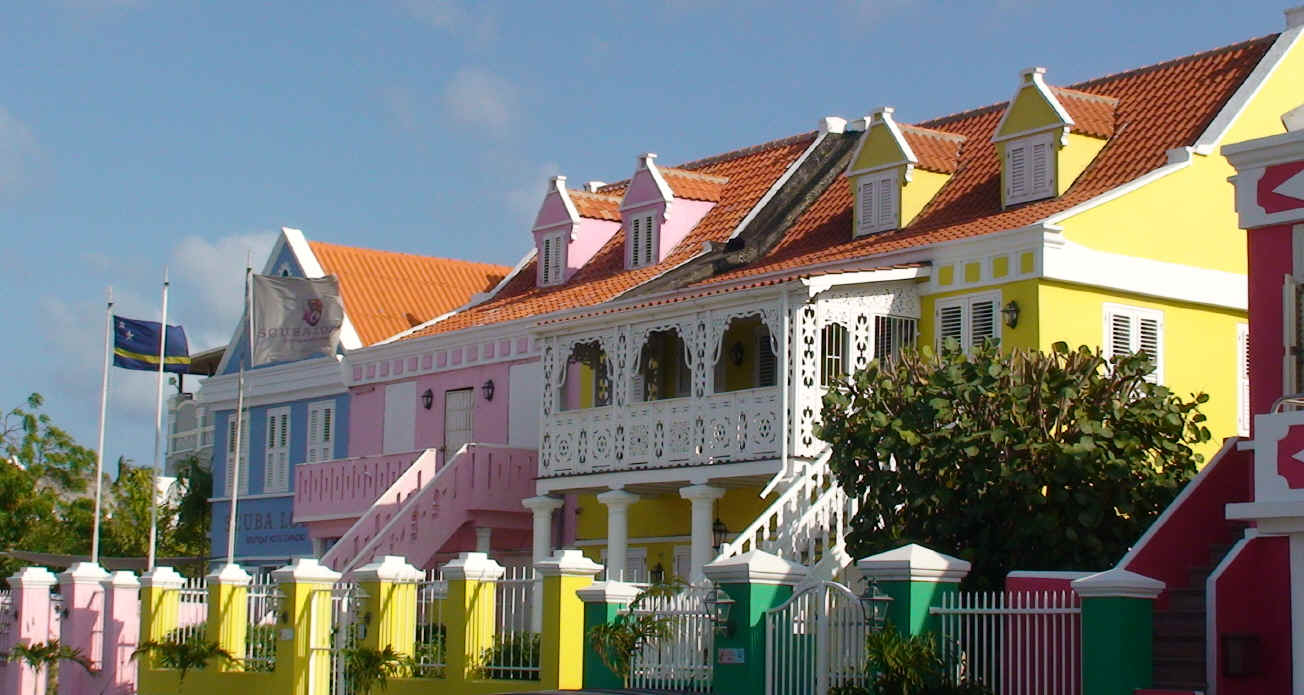
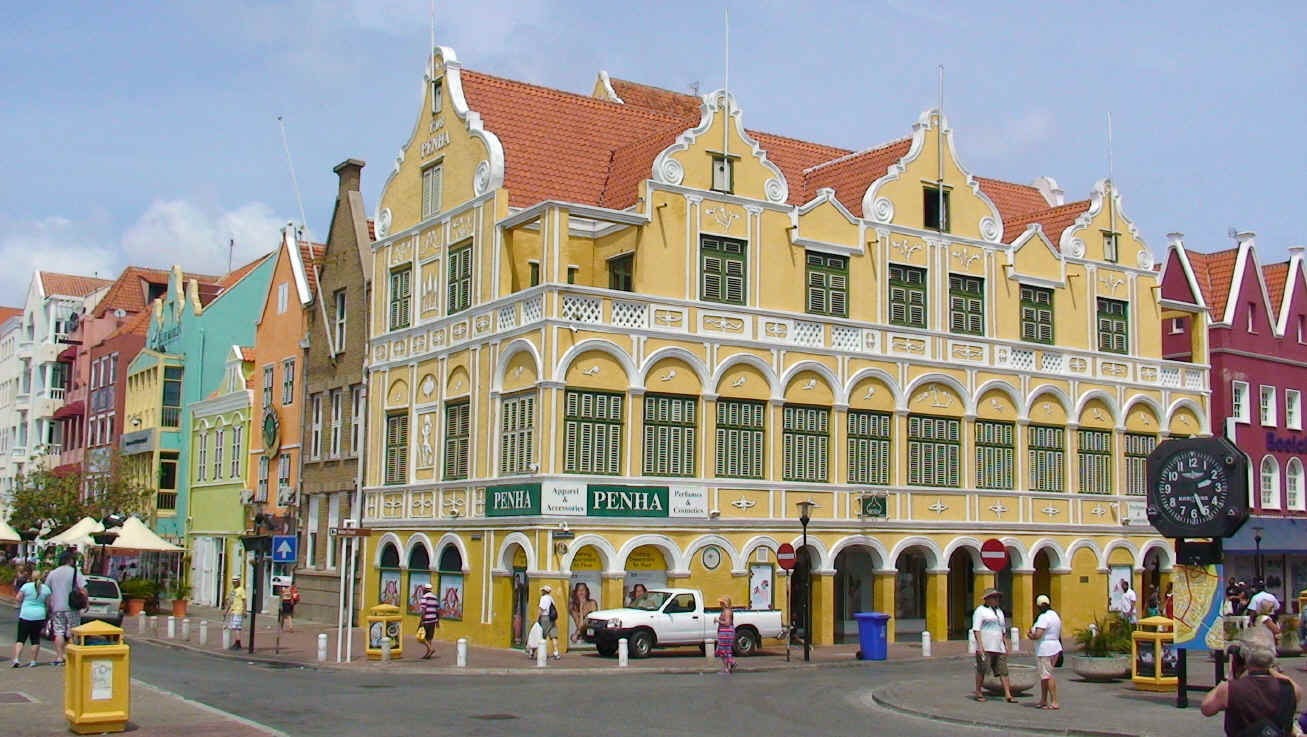
For some reason, nearly all their churches are yellow, almost a mustard shade. The cemeteries next to the churches are all above ground -- and locked up, for some reason; are they afraid people might go in and steal something?
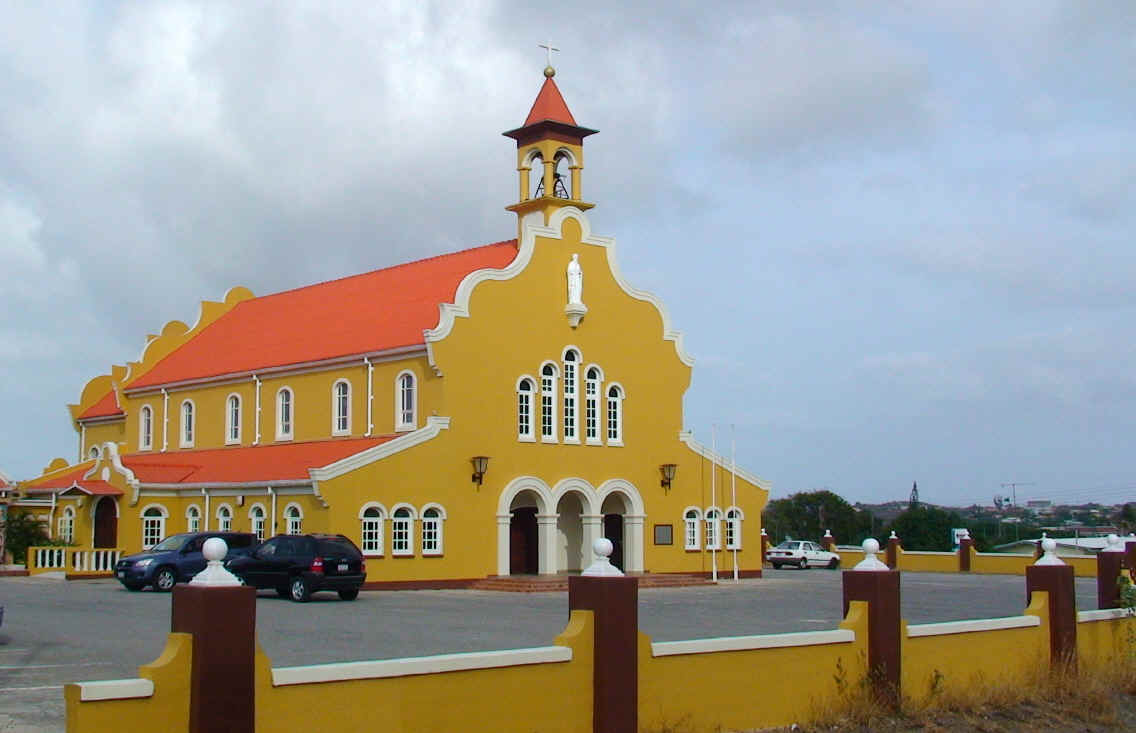
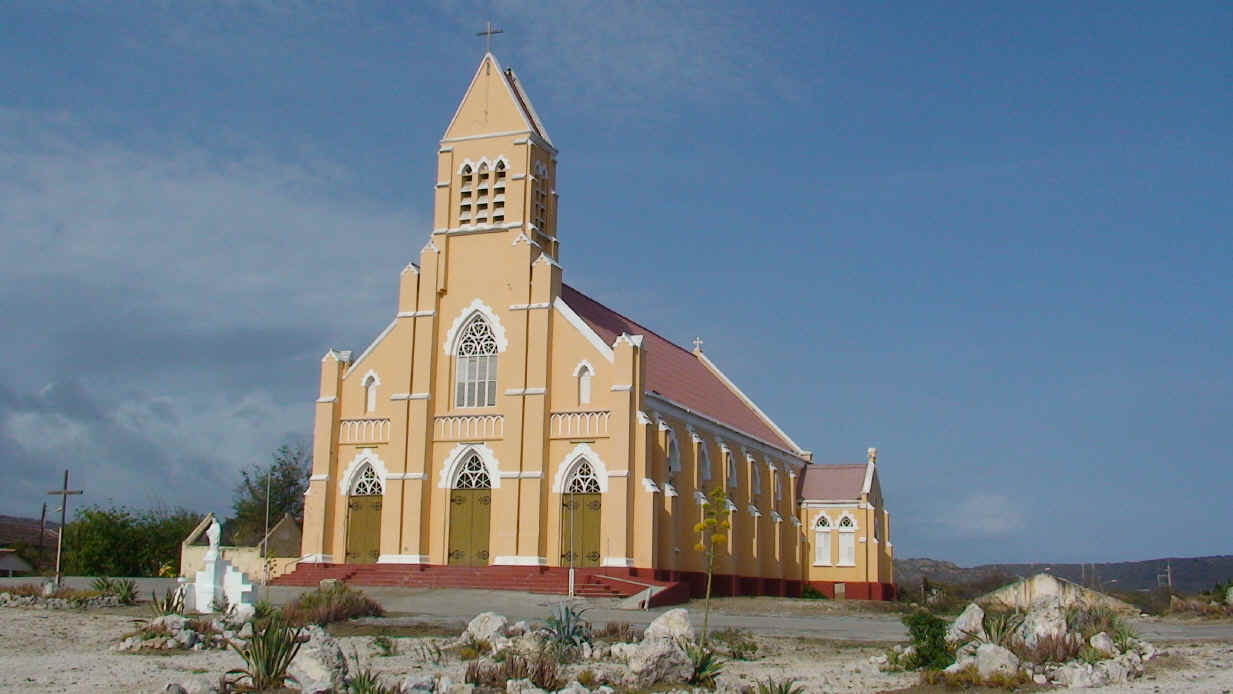

Notice the cemetery behind the tree!
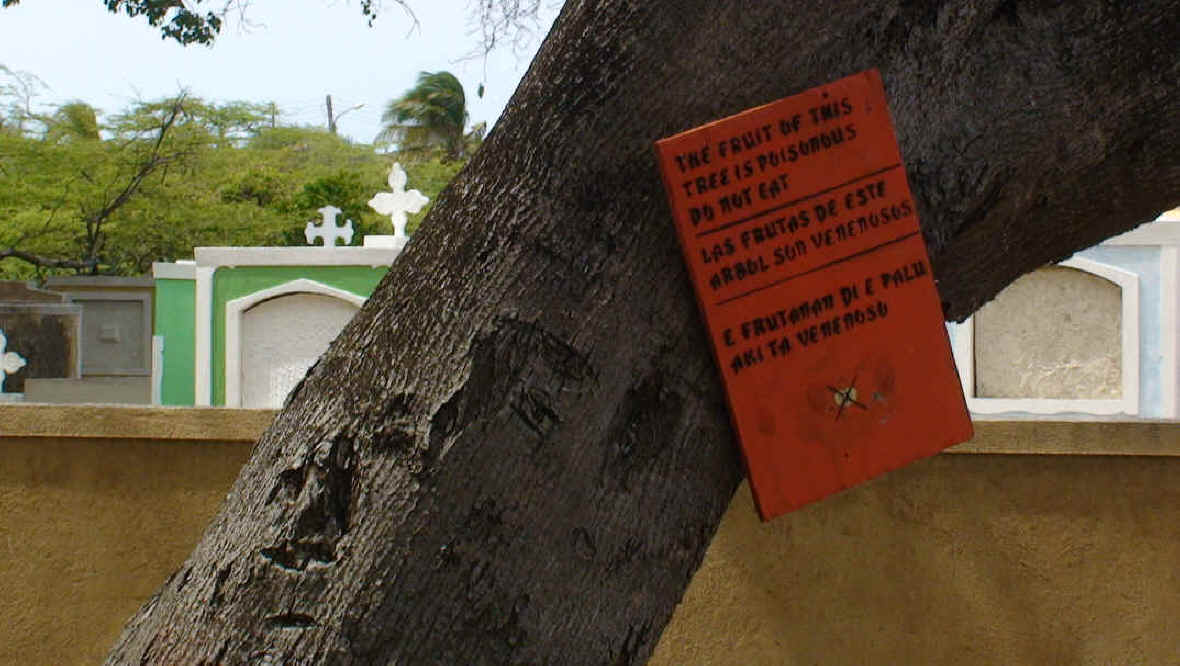
Downtown is split down the middle by a passage of water leading into the large bay where the oil refinery is, which is Curašao's largest business -- refining oil from Venezuela that gets shipped up in huge tankers. One side of downtown is called Punda, or the Point; the other side is called Otrobanda, which means Other Side! There are two bridges across the strait, the huge, high Queen Juliana Bridge, and the famous floating Queen Emma Bridge. I was driving rather randomly, and soon surprised myself by passing directly by the floating bridge. It is a wide wooden pedestrian bridge, 550 feet long, built in 1888. It was originally a toll bridge, though if you were barefooted, you didn't have to pay the toll. Now it's free, shoes or not.
I
wandered around a bit looking for a parking place, which was hard to find since
after all I was in the most crowded, touristy part of the whole island.
After a nice cop helped me figure out how to pay a parking meter, I
walked back to the bridge. It wasn't
there.
But way off on the other side (Otrobanda), parallel to the shore, there it was. They had disconnected it and swung it over there, where it now sat sideways. while some boats slowly sailed past to the open ocean. And it didn't show any signs of coming back, either. I found out that a couple of free ferry boats spring into action as soon as the bridge floats away, so I got on one and went the Other Side. I bought me a tee-shirt, but that was the extent of my whole souvenir shopping. When I came back to the shore, the bridge was floating right back into place, and soon, after the bell rang and the gates opened, a crowd of people surged on across.
When
I first saw the bridge:
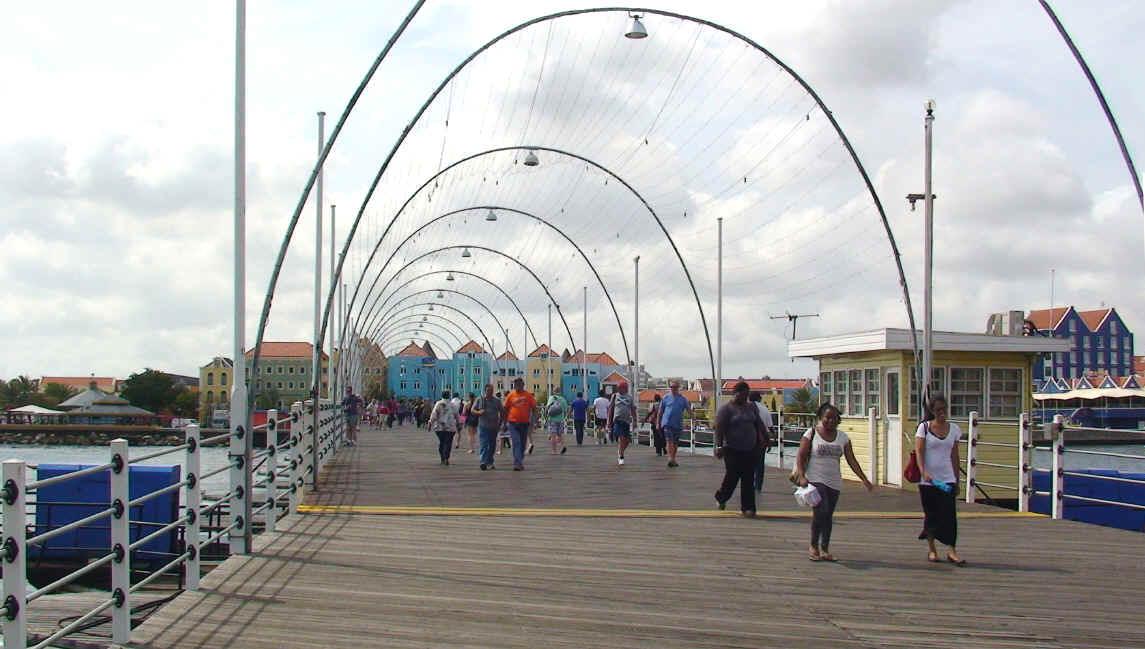
When I
went back, the bridge wasn't there!
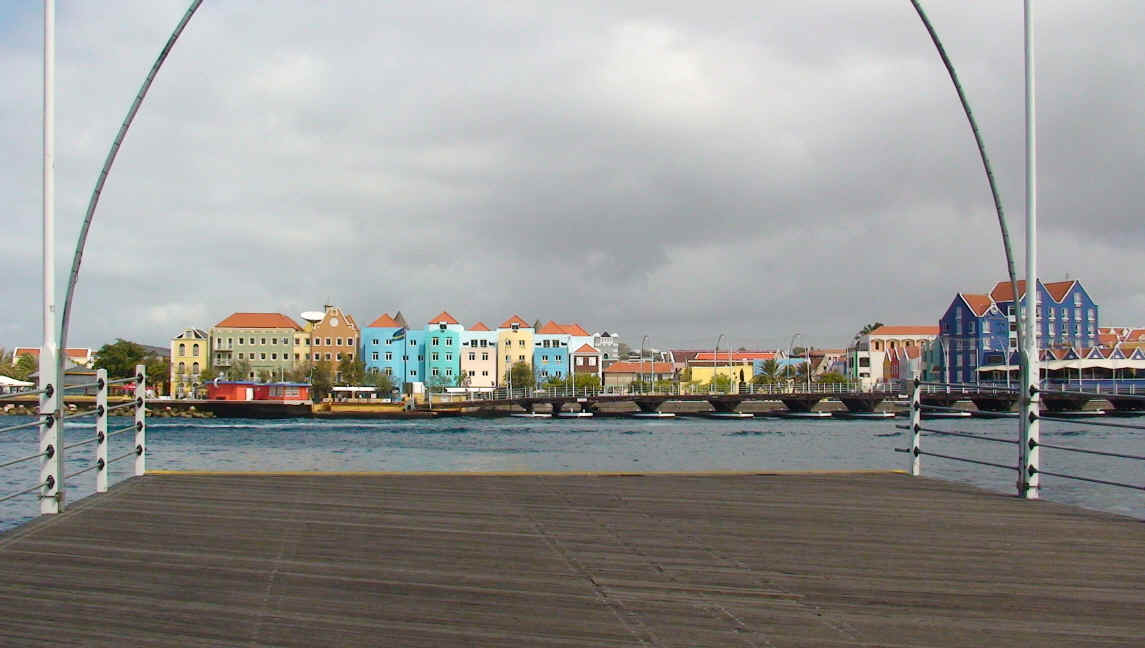
The
bridge in motion:
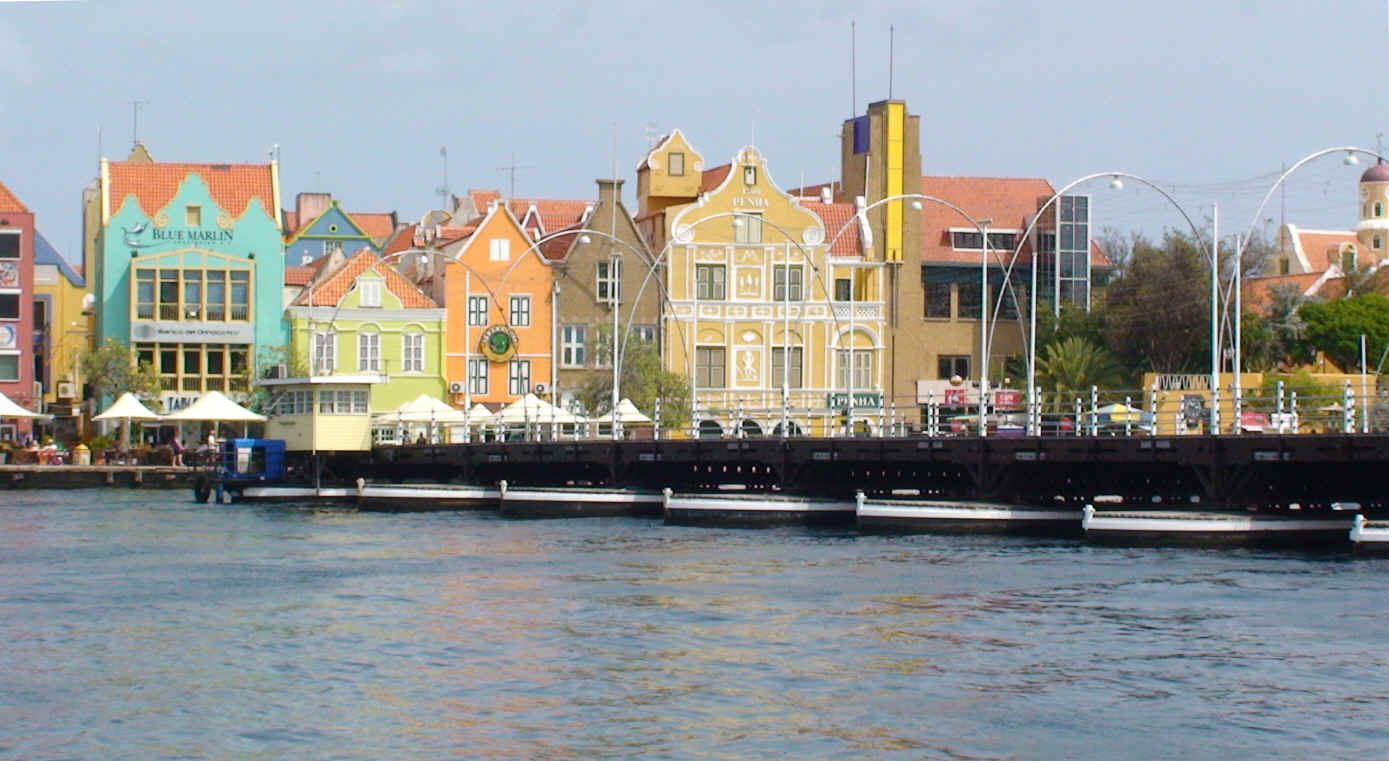
The
bridge in place:
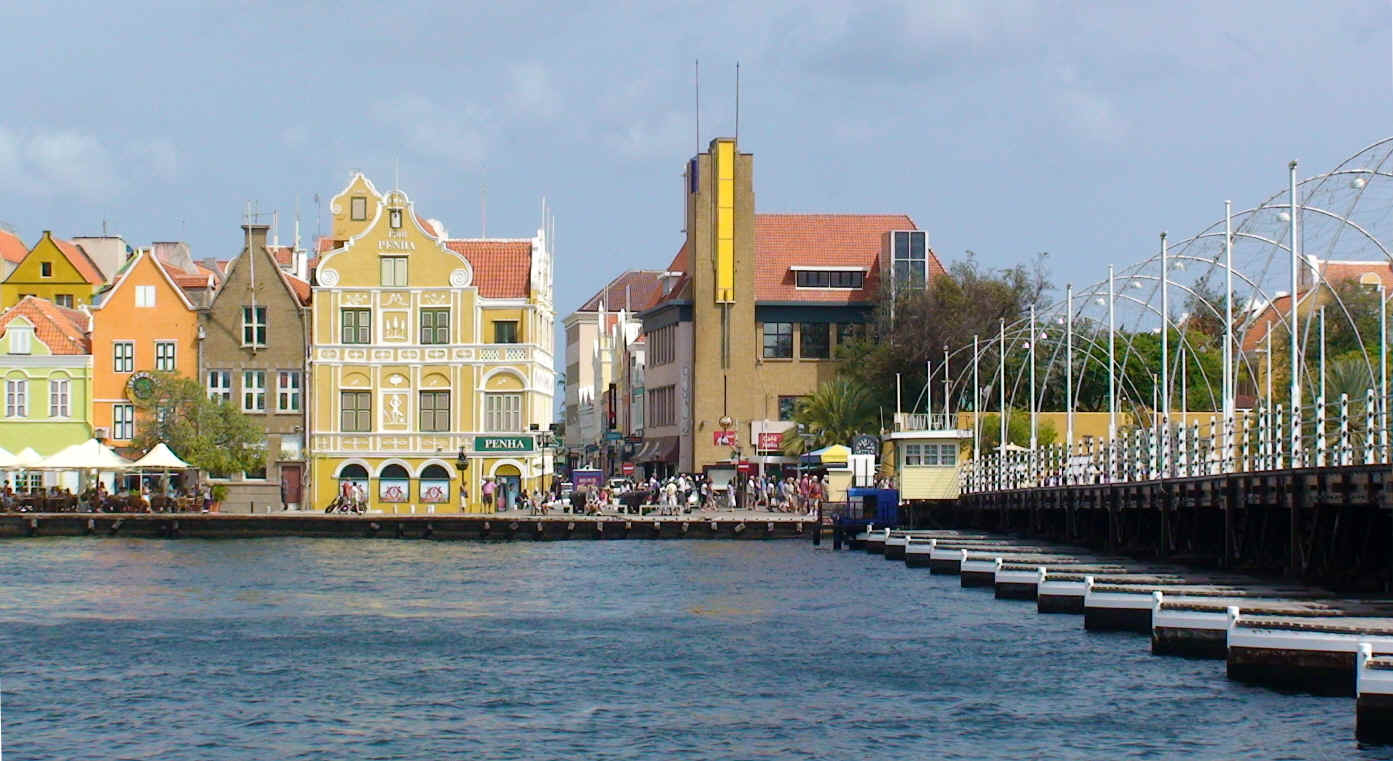
When
the bridge isn't there, you can take the free ferry:
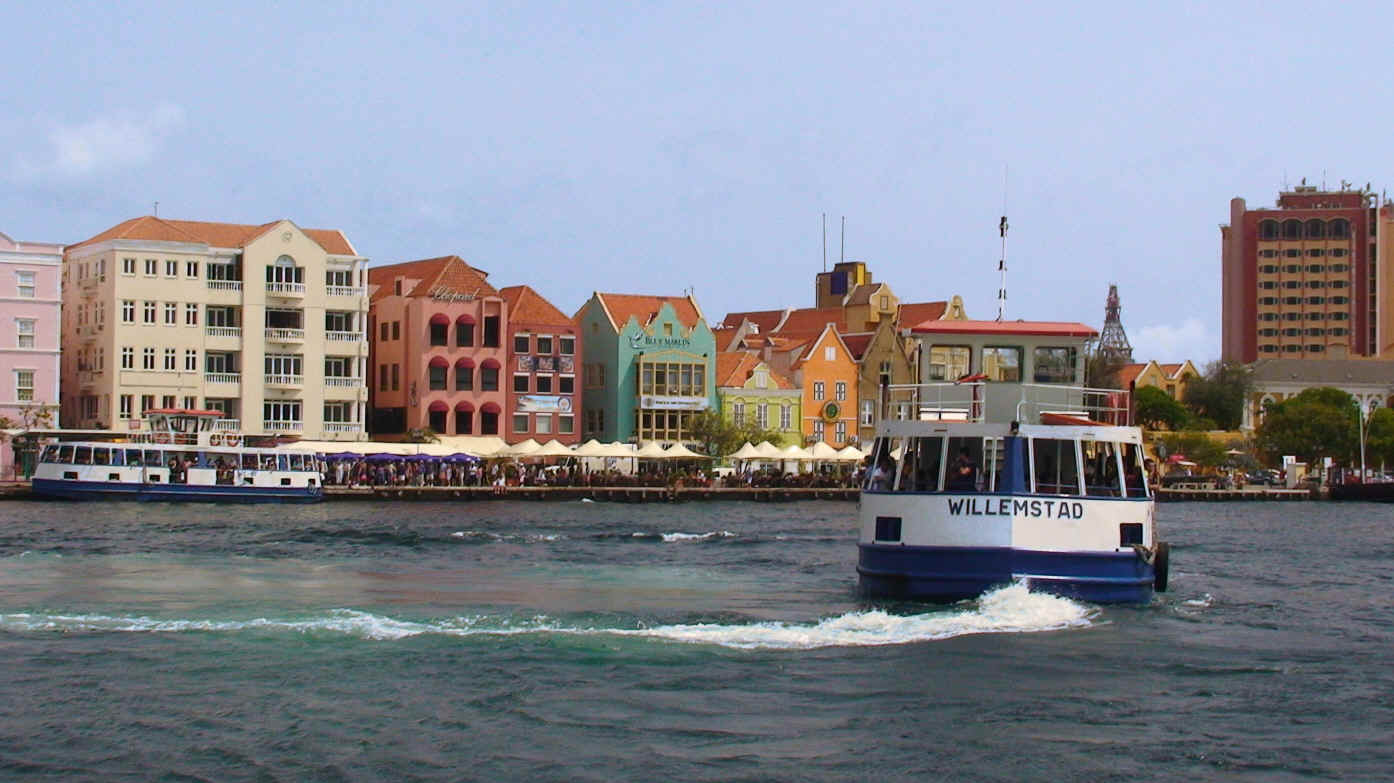
The
Queen Juliana Bridge:
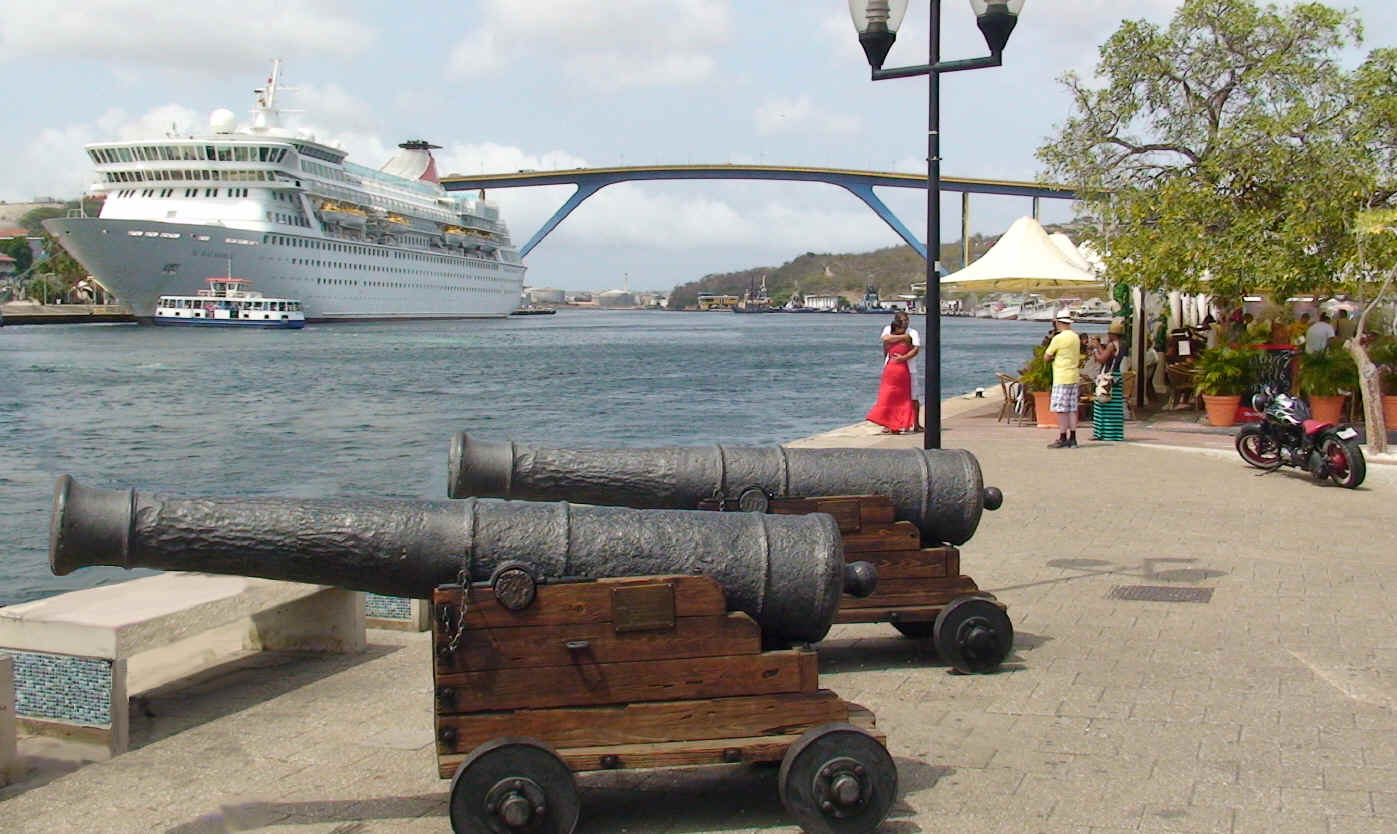
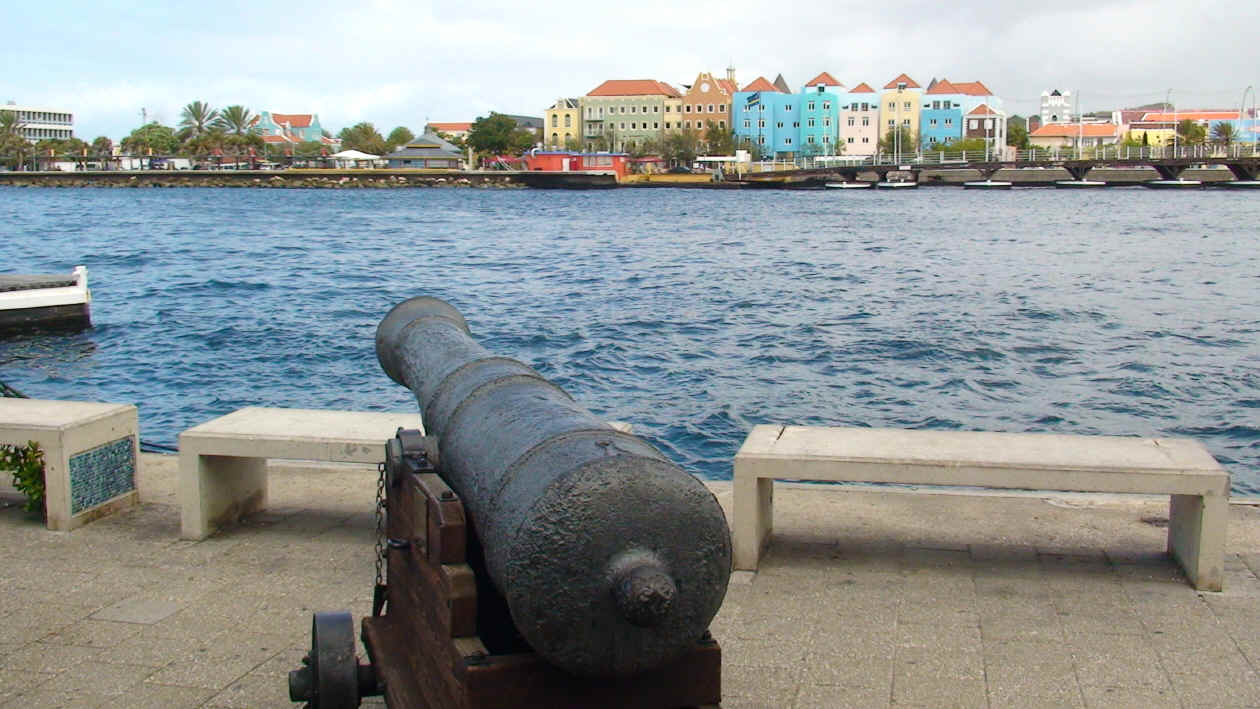
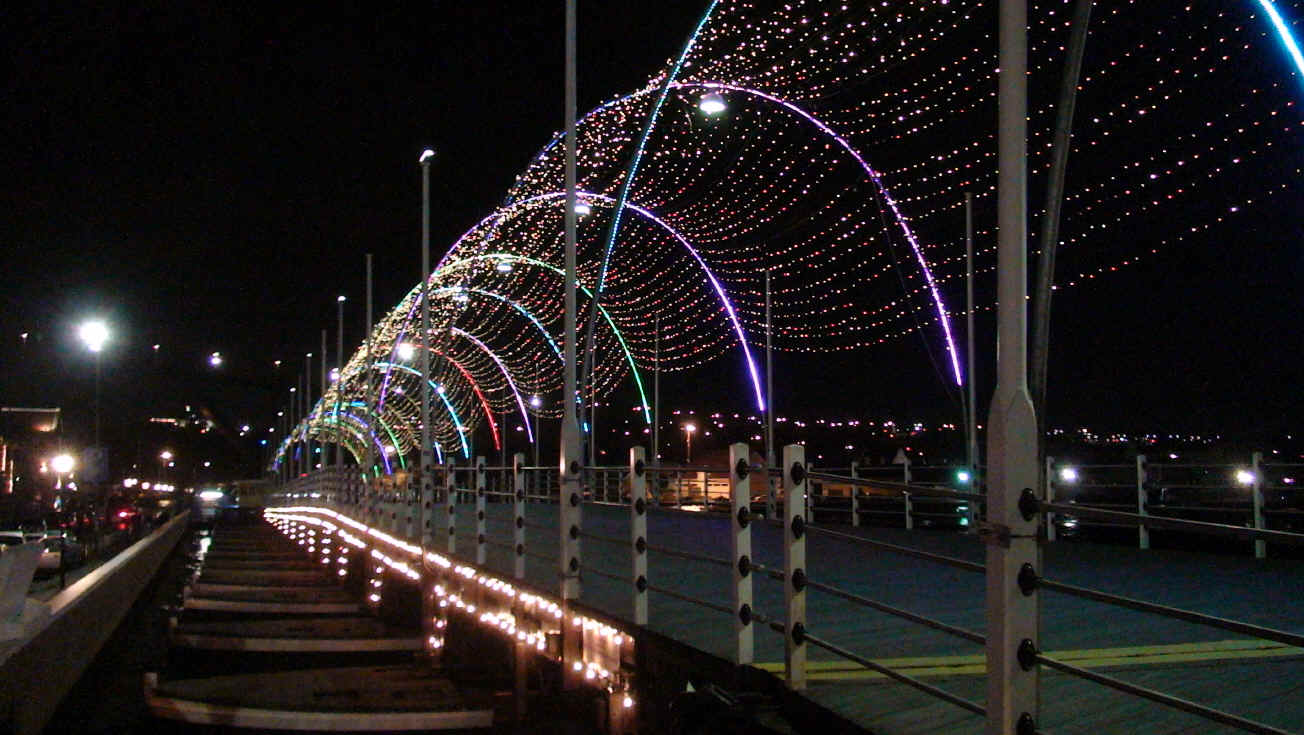
The airport is right on the north shore of the island, which is a good spot for it, since the beaches there are so awful there is no other development there at all. The beaches are scenic enough, but you sure don't want to go barefoot on the sharp coral. I found a pretty little sea arch, and sat there for a long time watching the waves come crashing in.
